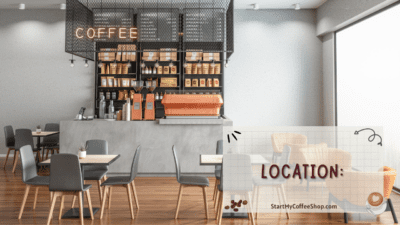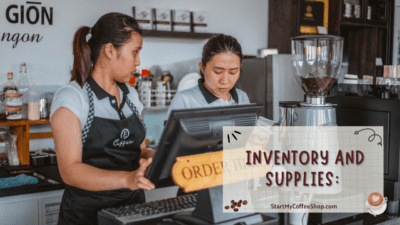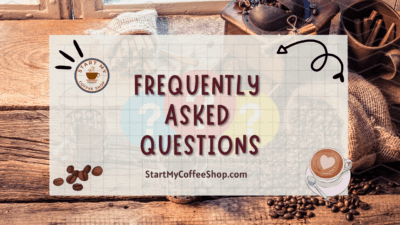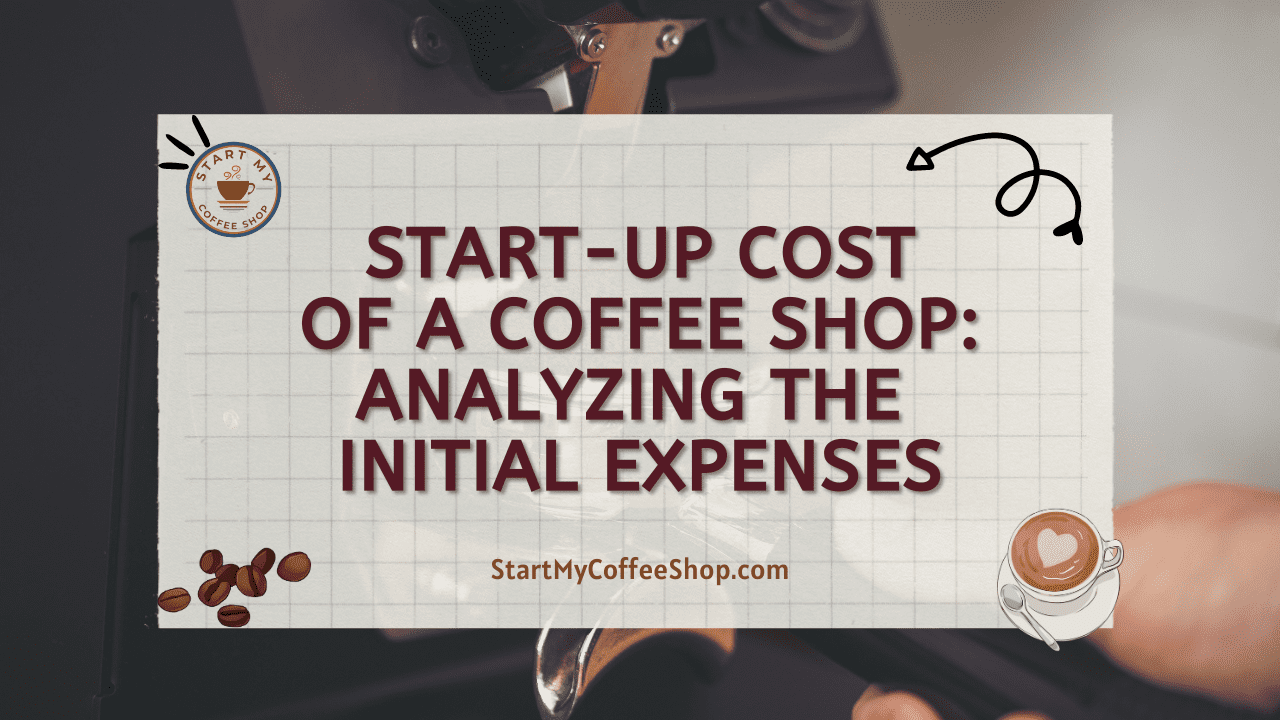Opening a coffee shop is a dream for many caffeine enthusiasts and aspiring entrepreneurs. However, turning this dream into a reality requires careful planning and an understanding of the startup costs involved.
The startup costs for a coffee shop can vary depending on factors like location expenses, lease and renovation costs, equipment and furnishings, licenses and permits, staffing, inventory, marketing, utilities, and a contingency fund. On average, you can expect to invest anywhere from $100,000 to $500,000 or more.
In this article, I will delve into the various expenses associated with opening a coffee shop, providing you with a comprehensive guide to help you navigate the financial aspects of this venture.
1. Location:
When it comes to opening a coffee shop, the significance of selecting the perfect location cannot be overstated. Your choice of location can have a substantial impact on your startup costs and overall performance.
Prime locations situated in bustling city centers or high-traffic areas tend to command higher rent prices, but they also offer tremendous potential for attracting a large customer base. However, it’s essential to carefully evaluate various factors before making a decision.

Firstly, consider the level of foot traffic in the area. A steady stream of potential customers passing by your coffee shop can significantly boost your chances of achievement. Additionally, assess the availability of parking spaces nearby, as convenient parking options can attract customers who prefer to drive.
Furthermore, take into account the proximity to other businesses. Being located near complementary establishments such as offices, retail stores, or educational institutions can provide a built-in customer base and enhance your chances of generating regular footfall.
While choosing a prime location can come with a higher price tag, it’s crucial to weigh the potential benefits against the associated costs. Conduct thorough market research, analyze demographic data, and carefully consider the financial implications before finalizing your coffee shop’s location.
Read more about Running a Coffee Shop Costs: A Deep Dive into Financial Considerations
2. Lease and Renovation Expenses:
When it comes to securing a lease for your coffee shop premises, it’s important to be prepared for the upfront costs involved. These costs typically include security deposits, legal fees, and potentially, advance rent payments. Additionally, you’ll need to allocate a budget for renovation expenses to transform the space into an inviting and functional coffee shop.
Renovation costs can vary depending on the condition of the premises and the extent of the changes you want to make. It may involve tasks such as interior design, construction work, plumbing installations, electrical wiring, and the setup of specialized equipment like espresso machines and coffee grinders.
These elements are crucial for creating a seamless workflow and ensuring a high-quality coffee experience for your customers.
Consider working with professionals such as architects, interior designers, and contractors to develop a renovation plan that aligns with your vision and budget. Obtain multiple quotes and explore cost-saving measures without compromising on quality.
It’s also important to familiarize yourself with local building codes and regulations to ensure compliance throughout the renovation process.
3. Equipment and Furnishings:
Equipping your coffee shop with the necessary tools and furniture is a crucial investment that should not be overlooked. Several essential items are required to ensure the smooth operation of your coffee shop. These include high-quality espresso machines, coffee brewers, grinders, blenders, refrigerators, display cases, tables, chairs, and cash registers.
When selecting equipment, it is important to consider the quality and durability of the items you purchase. While it can be tempting to opt for cheaper alternatives, investing in reliable and efficient equipment will prove beneficial in the long run.
High-quality machines and appliances will not only enhance the taste and consistency of your coffee but also minimize downtime due to malfunctions or repairs, thus improving overall efficiency and customer satisfaction.
Additionally, investing in durable furniture is essential to create a comfortable and inviting atmosphere for your customers. Sturdy tables and chairs that can withstand regular use and are easy to maintain are key considerations. Pay attention to the design and style of the furniture as well, ensuring that it aligns with the aesthetic and ambiance you wish to create in your coffee shop.
While the cost of equipment and furniture can be significant, it is a necessary expense that should be factored into your startup budget. Prioritize quality and durability to ensure the long-term growth of your coffee shop.
4. Licenses and Permits:
Operating a coffee shop legally requires obtaining the necessary licenses and permits, which can vary depending on your location. These licenses and permits are essential to comply with local regulations and ensure the safety and quality of your operations. Researching and understanding the specific requirements in your area is crucial.
Common licenses and permits for a coffee shop include health permits, which ensure that your establishment meets hygiene and sanitation standards. Food handling certificates are also necessary to demonstrate that you and your staff are trained in proper food handling procedures.
To allocate funds for licenses and permits, it is important to consider the application fees and any ongoing renewal fees. These costs can vary depending on the jurisdiction and the type of permits required. Consulting with local authorities or business regulatory agencies can provide valuable information on the specific licenses and permits needed and associated costs.
By understanding and fulfilling the legal requirements, you can establish your coffee shop as a legitimate and trusted establishment. Compliance with licensing and permit regulations not only ensures the smooth operation of your business but also helps build customer trust and confidence.
5. Staffing and Training:
When considering startup costs, it’s important to allocate funds for various aspects of staffing. This includes recruitment costs such as advertising job positions, conducting interviews, and background checks. Additionally, factor in employee wages, benefits, and any incentives you plan to offer to attract and retain top talent.
In your budget, don’t forget to account for ongoing expenses related to staff, such as payroll processing fees and any required software or systems for efficient management. It’s also essential to consider expenses associated with employee benefits, such as healthcare insurance, retirement plans, and paid time off.
Moreover, familiarize yourself with legal obligations related to employee compensation, such as minimum wage laws, overtime regulations, and payroll taxes. Complying with these obligations is vital to avoid legal complications down the line.
Investing in proper training programs for your staff is equally important. Allocate funds for initial training as well as ongoing professional development to ensure that your team is equipped with the necessary skills to deliver exceptional customer service.
6. Inventory and Supplies:

Maintaining a well-stocked inventory of high-quality coffee beans, syrups, milk, pastries, and other supplies is an ongoing cost that should be carefully managed. When it comes to stocking your coffee shop, establishing strong relationships with local suppliers is key to ensuring a steady and reliable source of inventory.
To begin, estimate your initial inventory needs based on projected sales and customer demand. Consider factors such as the volume of daily transactions, popular menu items, and seasonal variations. However, it’s important to strike a balance and avoid overstocking, as excess inventory can lead to waste and spoilage, ultimately impacting your profitability.
Collaborating with local suppliers offers several advantages. Not only can you access fresh and locally sourced ingredients, but you may also have the opportunity to negotiate favorable pricing and establish a sense of community support.
Read more about Operation Costs for Opening a Coffee Shop: An Insider’s Guide to Operation Costs
7. Marketing and Branding:
Promoting your coffee shop and cultivating a strong brand identity are essential steps in attracting customers and establishing a thriving business. It’s important to allocate a portion of your budget to various marketing initiatives that will help create awareness and drive footfall to your shop.
Begin by investing in the creation of a visually appealing logo that represents your brand and sets you apart from the competition. This logo will be the face of your coffee shop and will be prominently displayed on signage, packaging, and marketing materials.
Designing a user-friendly and visually captivating website is also crucial in today’s digital age. Your website should provide essential information about your coffee shop, highlight your menu offerings, and include contact details for customers to reach out or place online orders.
Printed menus are a tangible and effective marketing tool that showcases your coffee and food offerings. Invest in well-designed and professionally printed menus that reflect the atmosphere and quality of your establishment.
In addition, leveraging social media platforms is an excellent way to engage with your target audience and build a community around your coffee shop. Develop a consistent social media presence by posting enticing visuals, engaging captions, and responding to customer inquiries and feedback.
Consider investing in local advertising channels such as newspapers, radio, or community bulletin boards to reach potential customers in your immediate vicinity.
Remember, effective marketing strategies create buzz, generate interest, and foster a sense of loyalty among your customer base. By allocating resources to these initiatives, you increase your chances of building a strong brand and attracting customers to your coffee shop.
8. Utilities and Operational Expenses:
Running a coffee shop entails various operational expenses that need to be considered in your budget. These include utilities such as electricity, water, and gas, which are essential for the day-to-day operation of your shop. Estimate these costs based on the size of your space, the equipment you use, and the utility rates specific to your location.
In addition to utilities, factor in ongoing operational expenses. Insurance premiums are necessary to protect your business and employees in case of unforeseen events. Accounting services ensure that your financial records are accurate and up to date. Cleaning supplies are essential for maintaining cleanliness and hygiene standards.
Waste disposal costs should also be accounted for, as proper waste management is crucial for a well-maintained environment. Additionally, set aside funds for routine maintenance and repairs to keep your equipment and premises in good working order.
9. Contingency Fund:
Even with meticulous planning, unforeseen expenses can arise during the startup phase of your coffee shop. It is prudent to establish a contingency fund to account for unexpected costs or to support the business during slower periods.
This fund serves as a safety net, offering financial stability and peace of mind as you navigate the initial stages of your coffee shop venture. By setting aside a portion of your budget for a contingency fund, you can mitigate the impact of unexpected circumstances, such as equipment repairs, unforeseen renovations, or temporary dips in sales.
This proactive approach allows you to maintain financial resilience and adaptability, enabling you to confidently address any challenges that may arise while striving for the long-term growth of your coffee shop.
Summary
Opening a coffee shop involves various startup costs that demand careful budgeting and planning. By understanding the financial aspects and allocating resources wisely, you can embark on your entrepreneurial journey with confidence.
While the initial expenses may seem daunting, a well-executed business plan and a passion for serving exceptional coffee can pave the way for a great coffee shop venture.
So grab your favorite blend, put on your thinking cap, and start brewing your dreams into reality!
Frequently Asked Questions

Question: What are the major expenses involved in opening a coffee shop?
Answer: The major expenses include lease and renovation costs, equipment and furnishings, licenses and permits, staffing, inventory, marketing, utilities, and a contingency fund.
Question: How can I reduce the startup costs of opening a coffee shop?
Answer: There are a few strategies to reduce costs, such as opting for a smaller space, purchasing used equipment, negotiating favorable lease terms, and exploring cost-effective marketing methods like social media and word-of-mouth advertising.
Question: Are there any ongoing costs I should consider?
Answer: Yes, apart from the initial startup costs, you should factor in ongoing expenses such as rent, utilities, payroll, inventory replenishment, marketing, maintenance and repairs, and insurance premiums.
To learn more on how to start your own coffee shop checkout my startup documents here
Please note: This blog post is for educational purposes only and does not constitute legal advice. Please consult a legal expert to address your specific needs.

Hi! I’m Shawn Chun
My adventure in coffee began when I first launched my first coffee shop back in the early 2000s. I had to figure out so many things on my own and to make it worse within 2 years of opening two large corporate coffee chains moved in just blocks away from me!
As I saw smaller and even some larger coffee shops in the neighborhood slowly lose customers to these giant coffee chains and slowly close up shop, I knew that I had to start getting creative…or go out of business.
I (like you may be) knew the coffee industry well. I could make the best latte art around and the foam on my caps was the fluffiest you have ever seen. I even had the best state-of-the-art 2 group digital Nuova Simonelli machine money could buy. But I knew that these things alone would not be enough to lure customers away from the name brand established coffee shops.
Eventually, through lots of trial and error as well as perseverance and creativity I did find a way to not only survive but also thrive in the coffee/espresso industry even while those corporate coffee chains stayed put. During those years I learned to adapt and always faced new challenges. It was not always easy, however, in the end, I was the sole survivor independent coffee shop within a 10-mile radius of my location. Just two corporate coffee chains and I were left after that year. All told the corporate coffee chains took down over 15 small independent coffee shops and kiosks and I was the last one standing and thriving.
Along the years I meet others with the same passion for coffee and I quickly learned that it is not only “how good a barista is” that makes a coffee shop successful, but the business side of coffee as well.
Hence why I started this website you are on now. To provide the tools and resources for up and coming coffee shop owners to gain that vital insight and knowledge on how to start a coffee shop successfully.
Stick around, browse through my helpful blog and resources and enjoy your stay! With lots of LATTE LOVE!
Shawn







